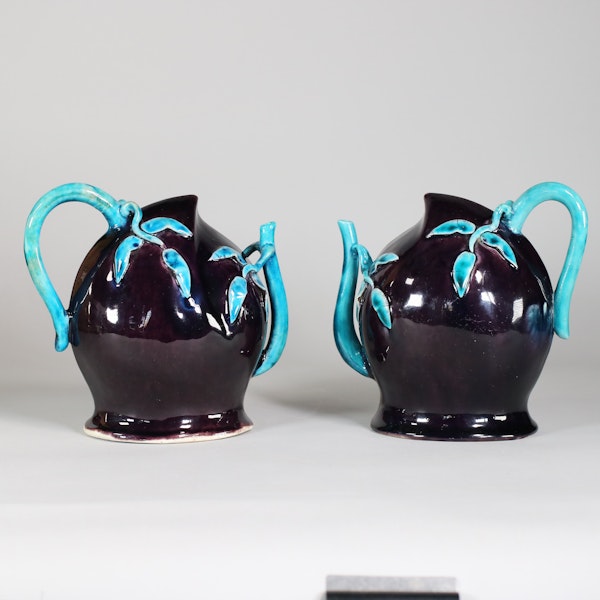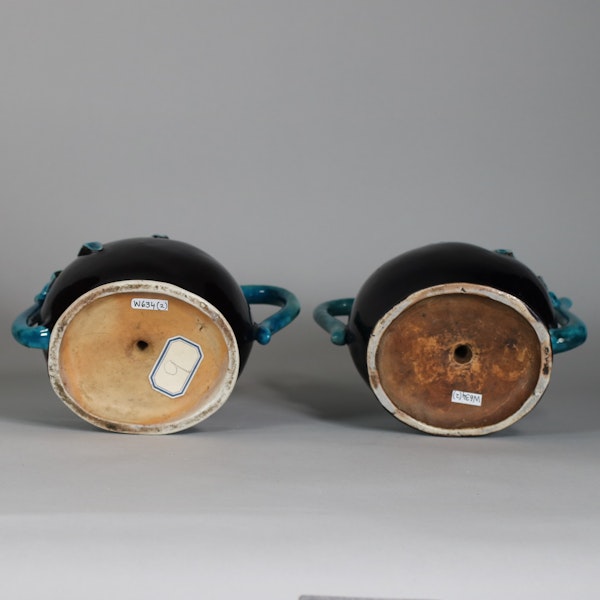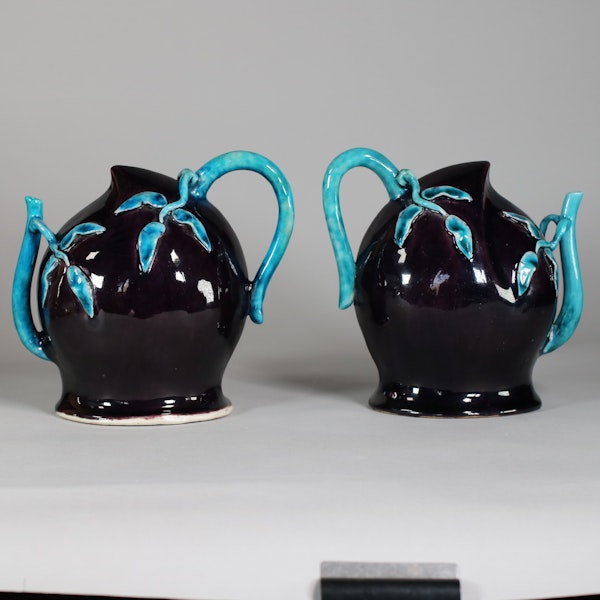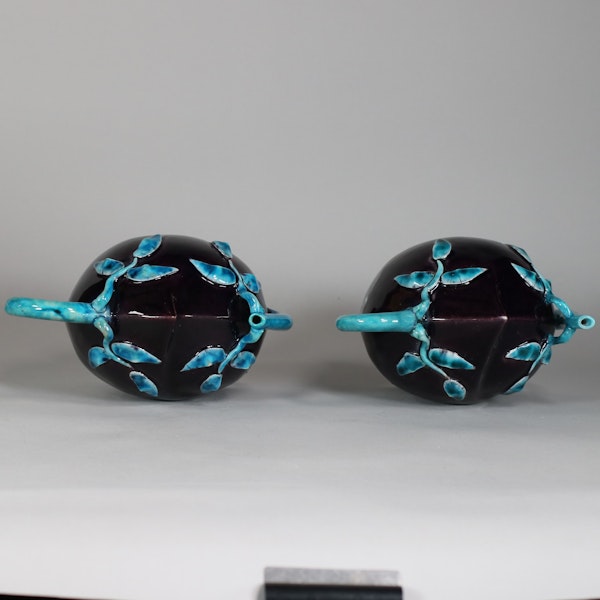Pair of Chinese monochrome Cadogan peach-shaped wine pots, Kangxi (1662-1722)
Pair of Chinese monochrome Cadogan peach-shaped wine pots, Kangxi (1662-1722)
POA
Description
Pair of Chinese monochrome Cadogan peach-shaped wine pots, Kangxi (1662-1722), the aubergine bodies rising from a spreading foot to a peaked tip, each with an applied branch-form handle and curved spout decorated with raised leaves all in turquoise, the recessed bases with central aperture.
Height: 15cm. (6in.)
Condition: One teapot with break to handle and spout, restored to a high standard
A very similar single pot can be found in the collection of the Metropolitan Museum of Art (Accession Number: 79.2.66), and another similar example is illustrated in J. Ayers, Chinese Ceramics in the Baur Collection, vol.1, Geneva: 1999, p.179 no.115 (A220).
Named after Lord Cadogan (1675-1726), who was said to have owned the first pot of this type in England, the ‘Cadogan’ is a type of pot designed to puzzle and amuse. Rather than a conventional opening or lid on the top, a hole in the base and long interior tube allows the vessel to be filled upside down and then turned the right way up without the contents spilling. Known in China as ‘dao guan hu’ (‘upside down filling wine pot’), they originated during the Kangxi period and were suitable for pouring wine or hot water rather than tea, as tealeaves would be difficult to remove from the interior after use. They were often made in the shape of a peach; a visual reference to the longevity of the Daoist Immortals, who were said to feast on the immortal peaches grown in the garden of Xiwangmu once every three thousand years. The allusion to the Immortals on a vessel for drinking wine is perhaps a playful nod to the parody poem ‘Eight Immortals of the Wine Cup’ (Yingzhong baxian), written by the Tang poet and lover of wine Du Fu to celebrate eight Tang literary figures and their drinking habits. Expanding perception and loosening inhibition was traditionally key to literati practice, and so their legendary gatherings were said to involve copious amounts of wine and hallucinogens.
| item details | |
|---|---|
| Material and Technique | Porcelain with applied and overglaze enamel decoration |
| Origin | Chinese |
| Period | 18th Century |
| Condition | Very good |
| Dimensions | Height: 15cm. (6in.) |
Product REF: W634








